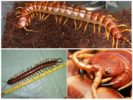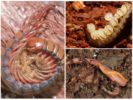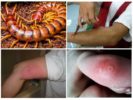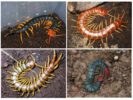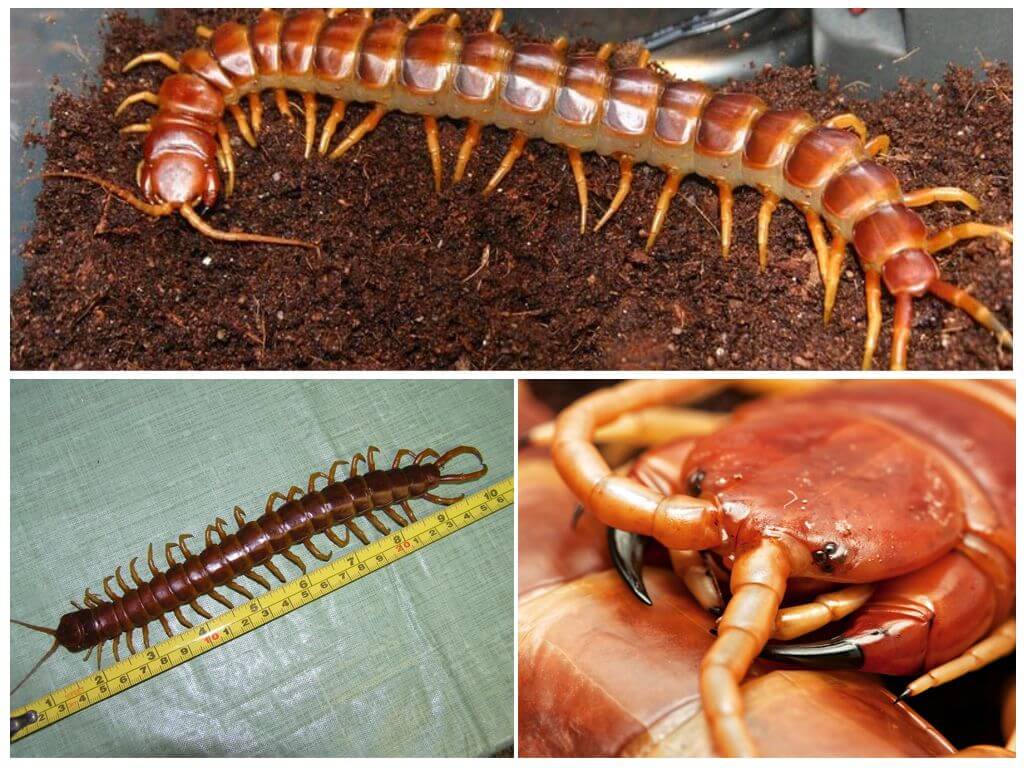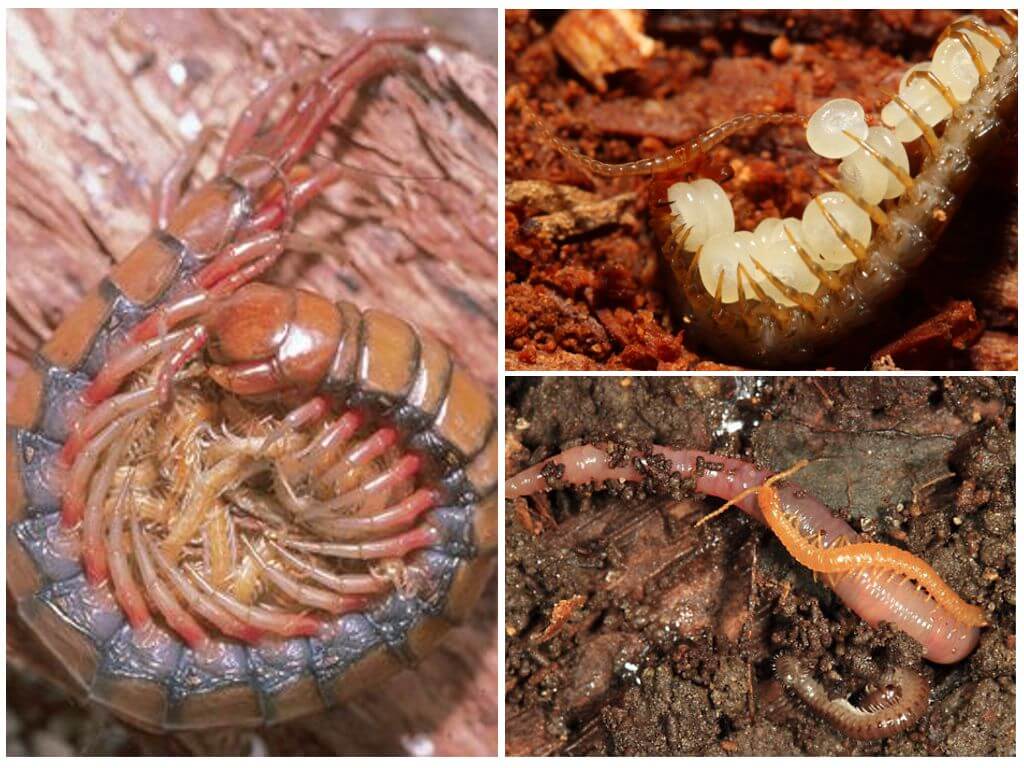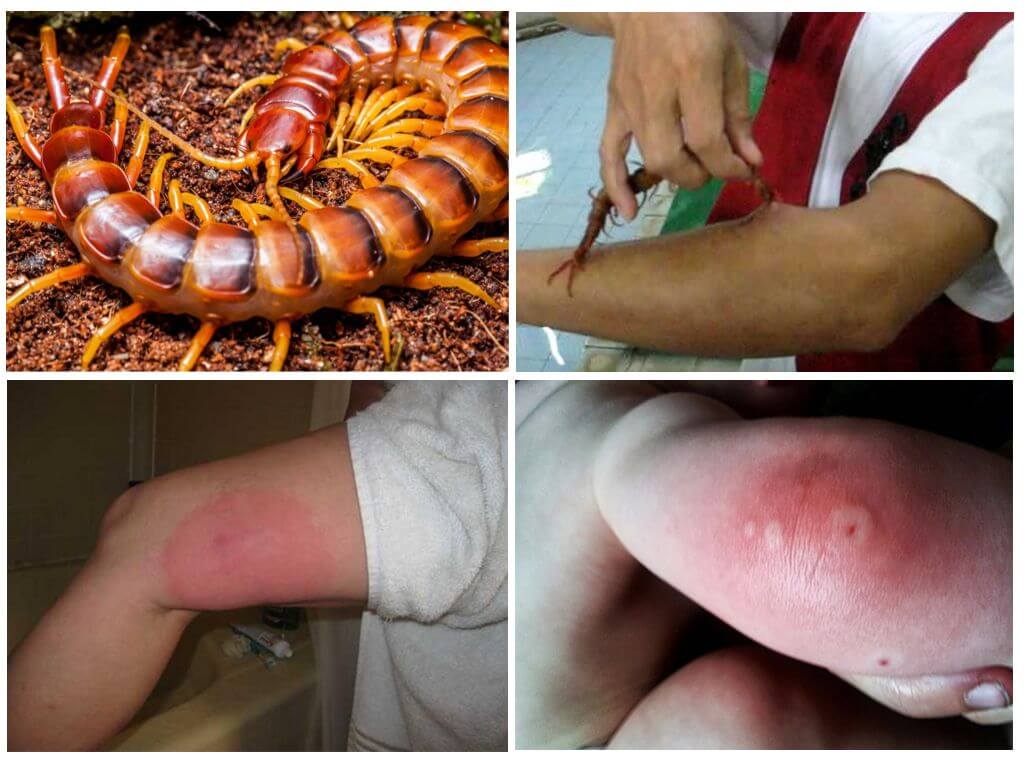- Giant scolopendra
- Scolopendra breeding
- Millipede bite
- Varieties of Scolopendras
Scolopendras belong to the most dangerous animals in the world because of aggressiveness and ability bite others with their poisonous jaws. Many people are afraid of them because of an unpleasant repulsive look. The most dangerous poison is released by the giant scolopendra, which lives on the American continent.
Biological description
Skolopendra belong to the genus of the leg-footed centipedes, the order of Skolopendrov, numbering about 90 species. The body consists of 21-23 segments, each of which contains a pair of legs ending in sharp spikes. The poisonous glands in some species are located near all legs, in others - only on the front.
The head looks like a plate with eyes, there are 2 antennae and 2 poisonous claws into which the front legs are transformed. The back pair of legs differs from the others in a longer and more directional direction, acting as an anchor when moving on the ground and when hunting.
The body consists of plates fastened with flexible membranes, externally protected by a chitin exoskeleton. Scolopendras periodically fade, i.e., discard the old cover, and the new one is already formed larger.
On a note!
Giant individuals are thermophilic and live in places with a tropical or subtropical climate. In Russia, they are found exclusively in the southern regions and are considered harmless to humans.
Huge scolopendras are nocturnal predators that hatch in the daytime in secluded places (in burrows underground, under stones, among plants, etc.), preferring wet shelters. After all, their body, due to lack of protection, loses moisture quickly enough. Due to the large number of legs, giant creatures move very quickly.
Giant scolopendras
The largest representatives of the scolopendras live in the western and northern parts of South America, on about. Jamaica and Trinidad. The body color of the giant scolopendra has shades from copper-red to brown, although there are red, green, blue and purple specimens. The legs are yellow. The anterior maxilla occurred during evolution from ordinary paws, they are connected to the glands that secrete poison. Due to the fact that her body is flat and the shell is dense, it is very difficult to destroy a huge insect mechanically.
Interesting!
The largest scolopendra in the world has a length of 30 cm, but in nature their average size ranges from 20 to 26 cm.
Huge millipedes feed on invertebrate animals: larvae, earthworms, bugs. Giant scolopendras quite successfully prey on small birds, frogs, lizards, mice, small snakes and even bats. The method of catching the latter is original: the predator climbs along the wall of the cave to the ceiling, holding on to its claws. With the help of the forelegs, an attack and retention of prey occurs, while poison is introduced, which paralyzes the victim.
Interesting!
Huge scolopendras, like others species of centipedesable to grow new paws to replace lost ones.
The process of digesting food in a giant scolopendra is very slow and lengthy, with interruptions. Extraction is broken down in the stomach by enzymes.
Breeding
By their habits, giant scolopendras belong to individualists. Fights between them are rare, but when they sort things out, they clutch tightly against each other and are in this position until the death of one of the rivals.
Females reach puberty by 2.5-3.5 years. Reproduction occurs in the spring, and, thanks to the presence of parthenogenesis, they can fertilize eggs on their own. During childbirth and later, females secrete a special secret, which prevents the appearance of mold on the laid eggs, and also helps to maintain the necessary moisture. After a few weeks, small protonymphs appear, similar to worms, they grow quickly: after 5-6 weeks, coloring begins to appear, then after 10-14 days the first molt passes.
Interesting!
The life cycle of huge scolopendras allows them to be attributed to centenarians, because in captivity some specimens survive up to 7 years.
Danger of the poison of a huge scolopendra
The venom of the giant scolopendra is fatal for small animals, and for humans it is a powerful toxin, causing symptoms of severe pain, swelling of not only a bitten place. For example, with a bite of a hand, the entire limb to the shoulder increases, swells, hurts severely for 2-3 hours, signs of inflammation and toxicity appear: chills, fever, weakness, etc.
The venom of a huge centipede contains chemicals: acetylcholine, serotonin, lecithin, histamine, thermolysin, hyaluronidases. When cold, it retains its properties, and when heated or under the influence of alcohol and alkalis is destroyed.
Important!
The bite of a giant scolopendra is especially dangerous for children and adults with weakened immunity or an allergic reaction of the body. Only one death is known in the world in China with a child who was bitten by a huge scolopendra in the head.
This giant millipede bites everyone in a row at the slightest threat due to the fact that she has very poor eyesight that distinguishes only light and darkness. Most often it attacks a person, if you take it in your hands, or crush it. There are cases when a huge centipede can run through the body completely harmless to humans, but the burn remains from the trace that it leaves behind.
Other types of huge scolopendras
Different types of giant millipedes differ in their body structure, length, living conditions and habitat. The dimensions and body color of all varieties differ: from brown to blue, green or red.
- California green scolopendra is found in the southwestern states of America and northern Mexico. A huge individual grows up to 16-20 cm. After touching it, a person can get burned due to the fact that there is a poisonous substance on her legs that causes skin irritation.
- Chinese red-headed scolopendra lives in the regions of East Asia and Australia. Its difference from its relatives is the ability to live in communities. Chinese females can even breed offspring by protecting their eggs with their bodies until hatching. In ancient Chinese medicine, giant millipedes were used to treat certain diseases. So, there is a belief about the ability to accelerate wound healing when the head of the scolopendra comes in contact with a sore spot on the skin.
- The ringed huge millipedes have a bright yellow body, distributed in the southern regions of Europe, 10-15 cm in size. When touched with legs, the insect leaves a burn in the body in the form of a small red rash that lasts for several hours.
- The Vietnamese scolopendra grows up to 15-20 cm, has an aggressive character, the body is bright blue or purple. The huge centipede emits poisonous mucus, which has the smell of phosphorus, it causes burns and inflammation of the skin.
Home Terrarium Maintenance
Giant scolopendras in recent years have become popular "pets" among lovers of exotic and invertebrates. They are kept in a high terrarium of sufficient size with a lid at the top so that the pet does not accidentally jump out of its home.
For a comfortable existence, it is important to maintain the necessary humidity, as well as the presence of a drinking bowl with standing water. Maintenance temperature: from 17-10 at night to 20-22ºС. Giant millipedes are fed large cockroaches, small frogs and lizards quite rarely: according to experts, one mouse or 5-6 cockroaches is enough for them to feed for 1 month.
When maintaining and caring for such huge pets, it is recommended to be careful and take special measures to prevent their escape from the terrarium.
